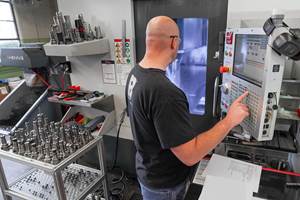Vise Jaws Carry Shop To New Levels Of Productivity
This shop used carrier workholding, in which the workpiece is gripped by a thin layer of extra material, to reduce cycle times. However, the cost of the carrier material and the time taken to remove it sometimes outweighed any cycle time improvements. Vise jaws from Talon Grip Systems that can grip as little as 0.06 inch of material allowed the shop to reduce carrier sizes and fully realize the benefits of this workholding method.
Share




Phoenix Machine recently faced a problem that is all too common among small job shops: Customers were increasingly deciding to send work overseas, which significantly cut into business. Feeling the sting of an approximate 30-percent decline in annual gross sales and increased pressure to reduce costs, the company needed to improve productivity to stay competitive and profitable. A set of vise jaws from Wood Village, Illinois-based Talon Grip Systems improved the efficiency of the shop’s workholding technique, allowing it to increase feeds and speeds and realize substantial material cost savings.
Phoenix Machine was founded 1987 in Gresham, Oregon as a one-man shop with a couple of Bridgeport mills and digital readouts. Since then, the company has grown considerably. Today, its nearly 12,000-square-foot facility houses 20 full- and part-time employees, nine VMCs and two HMCs. Specializing in close-tolerance machining on three- and four-axis CNC milling machines, the company manufactures products ranging from aerospace components to recreational items for its diverse customer base. Material applications include aluminum, stainless steel, copper and high-temperature alloys, as well as tool steel and various composites and plastics.
In an effort to control costs and reduce spindle downtime, the company undertook an aggressive setup reduction program and began to implement lean manufacturing practices. Both yielded favorable results. Next, it evaluated the machining processes for all its part orders in an attempt to find potential improvements. During a management meeting discussing cost reductions, Project Manager Jim Meador suggested implementing vise jaws designed by Talon Grip Systems that could improve the shop’s use of a technique known as "carrier" workholding.
Carrier workholding uses a thin layer of extra material (the carrier) on one side of the workpiece for clamping in a vise. Clamping the carrier allows easy access for machining five or more sides of the workpiece in a single setup. Typically, the part is then held by the side, top or other recently machined surface so that the carrier material can be milled off. Additional features can then be machined into the side of the part that held the carrier material.
This method can reduce cycle times because it requires less part handling and fewer machining operations. However, the carrier itself represents extra workpiece material—material that both costs money and takes time to remove. Also, depending on the application, a carrier made up of anything less than 10 to 30 percent of extra material thickness would require the operator to reduce feeds and speeds to provide the proper margin of clamping safety.
Talon Grip Systems’ vise jaws are designed to eliminate these disadvantages of carrier workholding. According to the company, they are a suitable alternative to the standard hardened jaws supplied with most 4- and 6-inch precision machining vises. The jaws can effectively clamp as little as 0.060 inch of material. Hardened tool steel "grippers" actually penetrate into carrier material as hard as 38 HRc, providing a strong holding force to allow aggressive machining without workpiece movement. The grippers’ positions are adjustable along the length of the jaws for different part configurations. Additionally, the jaws have a built-in work support surface that eliminates the need for parallels, and they incorporate an adjustable work stop below the cutting plane.
Phoenix Machine tested the vise jaws on a part made from a piece of 6061-T6 barstock that measured 1.75 inches thick, 5 inches wide and 5.06 inches long. Previously, this part was clamped in standard 6-inch steel vise jaws that gripped 0.187 inch of material. The original program used a three-flute, 3/4-inch-diameter carbide end mill at 12,000 rpm, 100 ipm and a 0.24-inch depth of cut. With the Talon Grip jaws, however, the shop increased the feed to 225 ipm and depth of cut to 0.74 inch, all while gripping only 0.06 inch of carrier material at the same spindle speed with no part movement. Phoenix determined that 1.5-inch barstock could be used for future runs, saving an estimated 14 percent in material costs. "You can’t believe how well the jaws hold until you see them in action," Mr. Meador says.
Phoenix Machine has now incorporated the vise jaws into the majority of their parts’ first operations. The jaws have provided an average productivity increase of 15 percent, although the shop has realized improvements of as much as 200 percent on some individual parts. Material costs also have been reduced by 10 percent. The jaws have also helped enable the company to add new customers and win back lost jobs by re-quoting at more competitive rates.
"With the help of cost-reduction efforts by a team willing to pitch in and work together, and with some time-saving products like the Talon Grip Systems vise jaws, we are on top of our game and feeling great about the future," says General Manager Stuart Hughes.
Related Content
Medical Shop Performs Lights-Out Production in Five-Axes
Moving to five-axis machining enabled this shop to dramatically reduce setup time and increase lights-out capacity, but success relied on the right combination of workholding and automation.
Read MoreWorkholding Fixtures Save Over 4,500 Hours of Labor Annually
All World Machinery Supply designs each fixture to minimize the number of operations, resulting in reduced handling and idle spindle time.
Read MoreNavigating Large-Scale CNC Machining: Suburban Tool’s Niche Strategy to Stay Competitive
Facing increasing competition from lower-cost imports, Suburban Tool made a move toward large-scale, in-house machining. By identifying a niche in large, precision angle plates and tombstones, the company has strengthened its ability to control quality and protect its reputation.
Read MorePrioritizing Workholding Density Versus Simplicity
Determining whether to use high-density fixtures or to simplify workholding requires a deeper look into the details of your parts and processes.
Read MoreRead Next
5 Rules of Thumb for Buying CNC Machine Tools
Use these tips to carefully plan your machine tool purchases and to avoid regretting your decision later.
Read MoreSetting Up the Building Blocks for a Digital Factory
Woodward Inc. spent over a year developing an API to connect machines to its digital factory. Caron Engineering’s MiConnect has cut most of this process while also granting the shop greater access to machine information.
Read MoreRegistration Now Open for the Precision Machining Technology Show (PMTS) 2025
The precision machining industry’s premier event returns to Cleveland, OH, April 1-3.
Read More
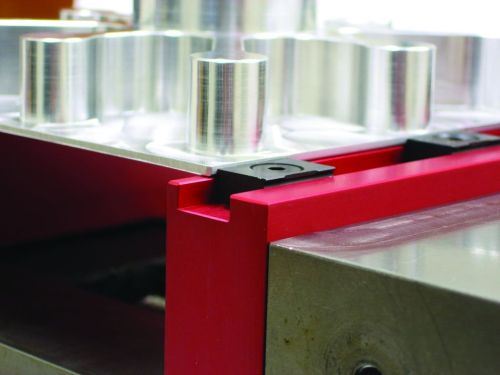
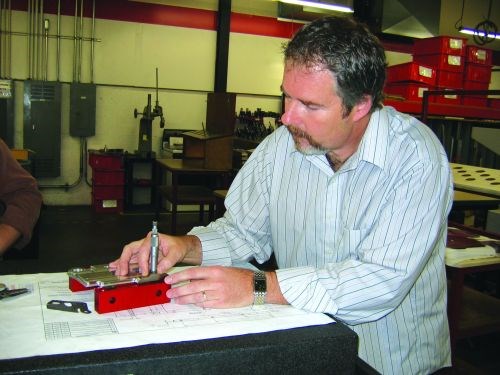
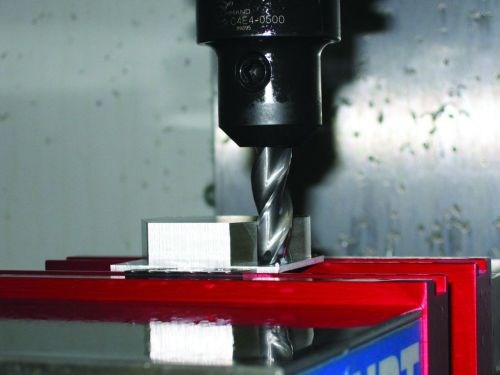
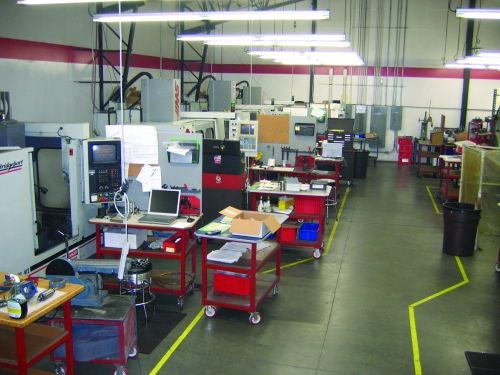

















.jpg;maxWidth=300;quality=90)









